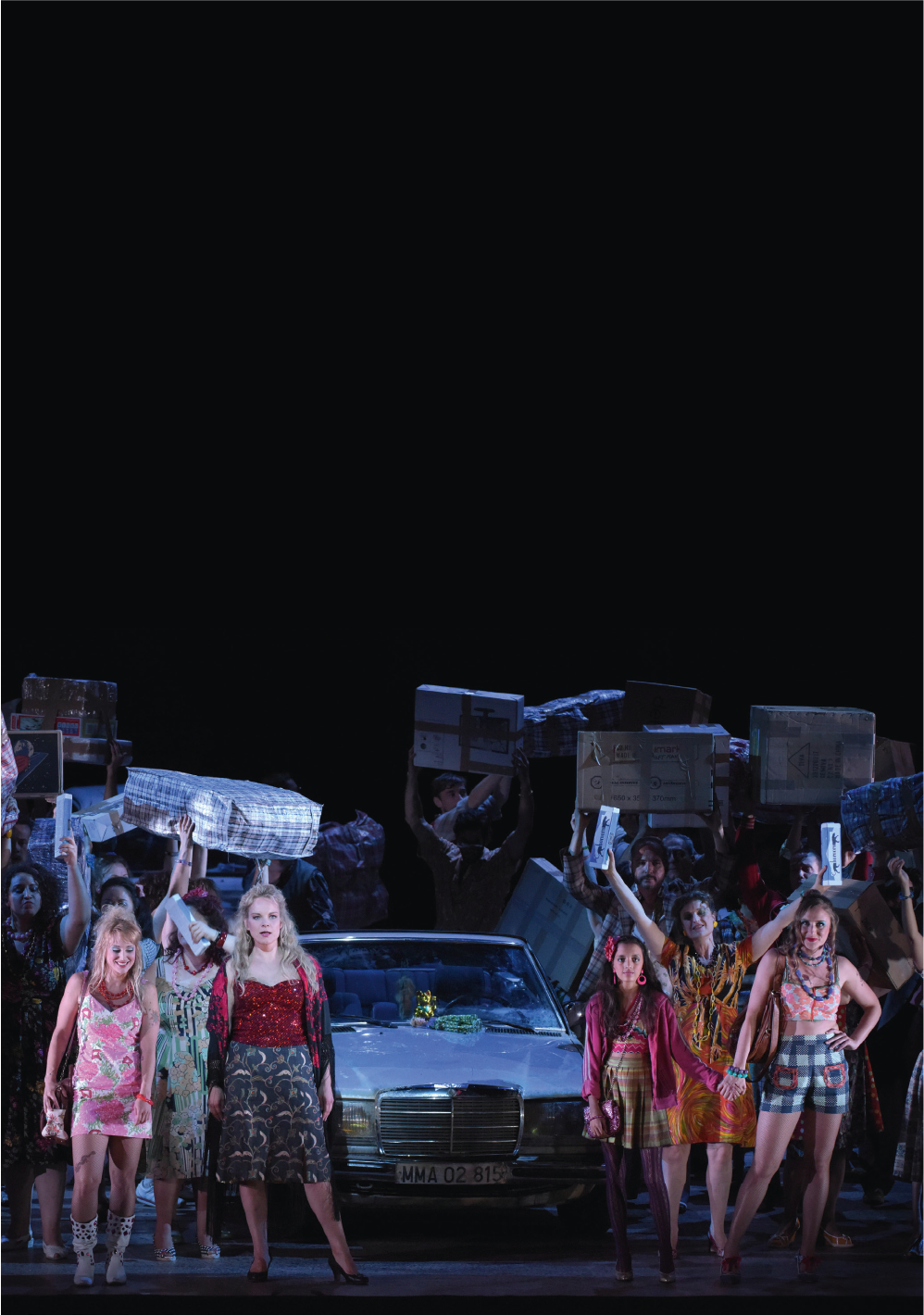Synopsis
Listen to the synopsis
She burns with life, attracted by the sparkle of diamonds and the glitter of the balls where Paris’ golden youth whirls and swirls. What is this woman’s name? Marguerite Gautier, the courtesan described by Alexandre Dumas fils in La Dame aux camélias? Or Manon Lescaut, the Abbé Prévost’s heroine?
For choreographer John Neumeier, these two characters are so similar that he intertwines their destinies by introducing a ballet about Manon into his Dame aux camélias. Thanks to this link, he adds a new dimension allowing us to delve deeper into the psychology of the lovers Marguerite and Armand.
To the music of Chopin, intimately interwowen with memories, dreams and reality, the wealth of colours, costumes and ribbons responds to the flood of emotions that overwhelm the characters.
These emotions are shared by the audience, won over by the virtuosity and romanticism of this ballet which entered the Paris Opera repertoire in 2006.
Artists
Ballet in three atcs
After Alexandre Dumas fils
Creative team
With the Paris Opera Étoiles, Premières Danseuses, Premiers Danseurs and Corps de Ballet
The Paris Opera Orchestra
Media
Access and services
Palais Garnier
Place de l'Opéra
75009 Paris
Public transport
Underground Opéra (lignes 3, 7 et 8), Chaussée d’Antin (lignes 7 et 9), Madeleine (lignes 8 et 14), Auber (RER A)
Bus 20, 21, 27, 29, 32, 45, 52, 66, 68, 95, N15, N16
Calculate my route-
Cloakrooms
Free cloakrooms are at your disposal. The comprehensive list of prohibited items is available here.
-
Bars
Reservation of drinks and light refreshments for the intervals is possible online up to 24 hours prior to your visit, or at the bars before each performance.
At the Palais Garnier, buy €10 tickets for seats in the 6th category (very limited visibility, two tickets maximum per person) on the day of the performance at the Box offices.
In both our venues, discounted tickets are sold at the box offices from 30 minutes before the show:
- €25 tickets for under-28s, unemployed people (with documentary proof less than 3 months old) and senior citizens over 65 with non-taxable income (proof of tax exemption for the current year required)
- €40 tickets for senior citizens over 65
Get samples of the operas and ballets at the Paris Opera gift shops: programmes, books, recordings, and also stationery, jewellery, shirts, homeware and honey from Paris Opera.
Palais Garnier
- Every day from 10:30 a.m. to 6 p.m. and until performances end
- Get in from Place de l’Opéra or from within the theatre’s public areas
- For more information: +33 1 53 43 03 97
Online
Palais Garnier
Place de l'Opéra
75009 Paris
Public transport
Underground Opéra (lignes 3, 7 et 8), Chaussée d’Antin (lignes 7 et 9), Madeleine (lignes 8 et 14), Auber (RER A)
Bus 20, 21, 27, 29, 32, 45, 52, 66, 68, 95, N15, N16
Calculate my route-
Cloakrooms
Free cloakrooms are at your disposal. The comprehensive list of prohibited items is available here.
-
Bars
Reservation of drinks and light refreshments for the intervals is possible online up to 24 hours prior to your visit, or at the bars before each performance.
At the Palais Garnier, buy €10 tickets for seats in the 6th category (very limited visibility, two tickets maximum per person) on the day of the performance at the Box offices.
In both our venues, discounted tickets are sold at the box offices from 30 minutes before the show:
- €25 tickets for under-28s, unemployed people (with documentary proof less than 3 months old) and senior citizens over 65 with non-taxable income (proof of tax exemption for the current year required)
- €40 tickets for senior citizens over 65
Get samples of the operas and ballets at the Paris Opera gift shops: programmes, books, recordings, and also stationery, jewellery, shirts, homeware and honey from Paris Opera.
Palais Garnier
- Every day from 10:30 a.m. to 6 p.m. and until performances end
- Get in from Place de l’Opéra or from within the theatre’s public areas
- For more information: +33 1 53 43 03 97
Online

Discover opera and ballet in another way

Dive into the Opera world and get insights on opera and pop culture or ballet and cinema. Scan this code to access all the quiz and blindtests on your mobile.

3 min
La Dame aux camélias
The Lady of the Camellias: the true/false story
Armand Duval is grieving for the courtesan Marguerite Gautier. But this poor crying soul‘s not the only broken heart of the ballet. Follow his inner monologue and try to unravel the true story of a disenchanted love.
DiscoverYou will also like
Partners
-
Principal Sponsor of the Paris Opera

























































